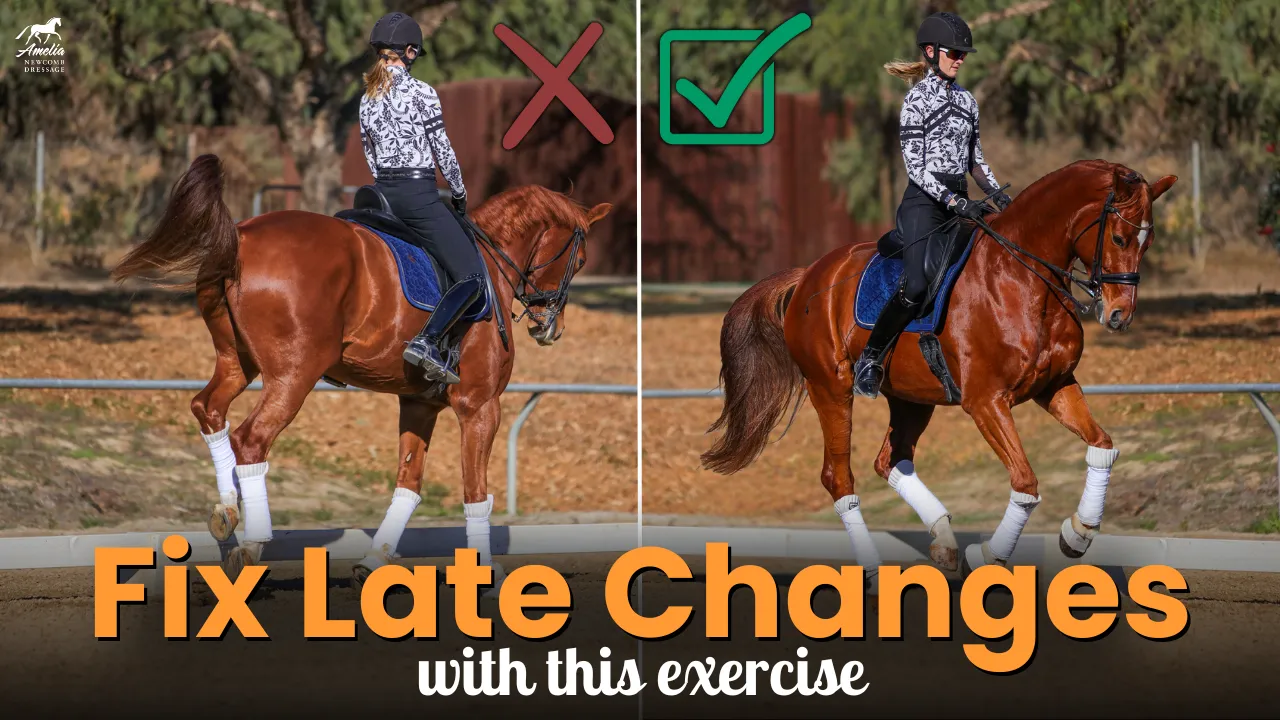In this video, I’m diving into a foundational skill that every great rider possesses: an independent seat. If you’ve ever watched top riders, you’ve likely noticed how seamlessly they move with their horses, as if they’re one entity. That’s the power of an independent seat—it allows you to communicate effectively with your horse while maintaining balance and harmony. Today, I’ll share exercises to help you develop this crucial skill, whether you’re just starting out or refining your seat.
What Is an Independent Seat?
An independent seat means that your seat, hands, and legs can function independently of one another. For example, your hands can give an aid without your seat or legs changing, and your seat can follow your horse’s movement without disturbing their rhythm. This is what creates that effortless look we admire in skilled riders. It’s not just about aesthetics—it’s about clear communication with your horse.
Exercises to Develop an Independent Seat
- Start at the Walk
- Begin by focusing on the movement of your hips. Let your hips follow the natural swing of your horse’s walk.
- Practice giving up one rein at a time. For example, release your left rein while keeping your hips moving with the horse. Then switch to the right rein.
- Ensure that your seat remains steady and your horse continues moving forward without disruption.
- Alternate Between Posting and Sitting Trot
- At the trot, establish a steady rhythm and practice alternating between posting trot and sitting trot.
- The goal is to transition seamlessly without disturbing your horse’s rhythm or frame.
- If your horse speeds up or raises their head, it’s a sign that your seat isn’t fully independent. Keep practicing until you can make these transitions smoothly.
- Ride Without Stirrups
- Take your stirrups away to deepen your connection with your horse. Cross them over the front of your saddle to keep them out of the way.
- Focus on staying balanced on your seat bones and keeping your legs in the correct position, as if you still had stirrups. This engages your inner thighs and calves.
- Ride at the trot and canter without stirrups, feeling how your seat follows your horse’s movement naturally.
Why Practice an Independent Seat?
An independent seat is the foundation of effective riding. It allows you to:
- Give aids with precision, without unintended signals from your seat or legs.
- Stay balanced and secure, even during unexpected movements.
- Build trust and harmony with your horse, as they can feel your stability and consistency.
When your seat moves with your horse, you become part of their rhythm, making it easier to ride transitions, maintain contact, and communicate clearly.
A Word of Encouragement
Developing an independent seat takes time and consistent practice, but it’s a skill every rider can improve, no matter their experience level. By incorporating these exercises into your routine, you’ll strengthen your connection with your horse and feel more secure and balanced in the saddle.
I hope these tips and exercises help you on your journey to a better seat. Keep practicing, and happy riding!
Happy riding,
Amelia








































